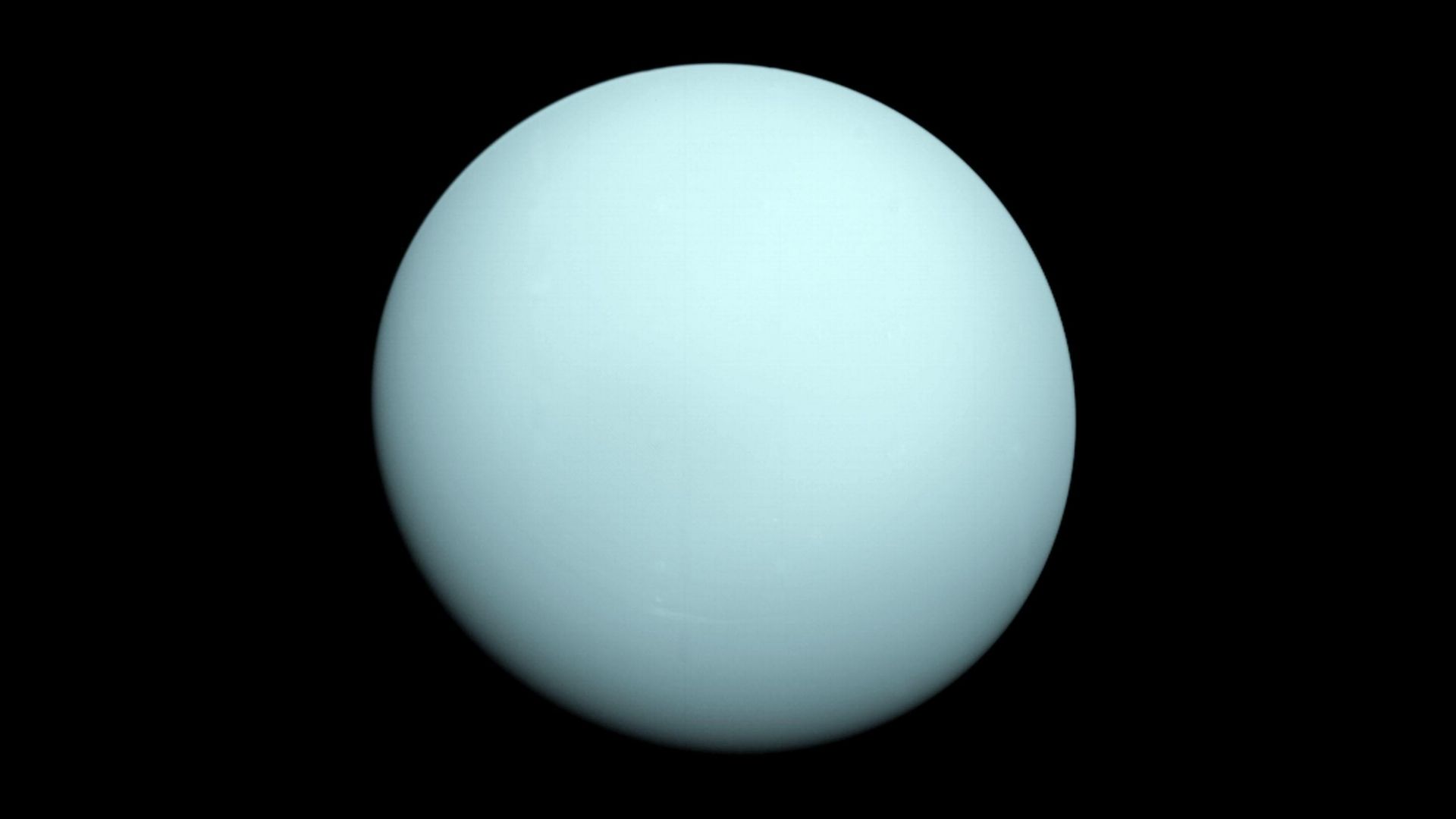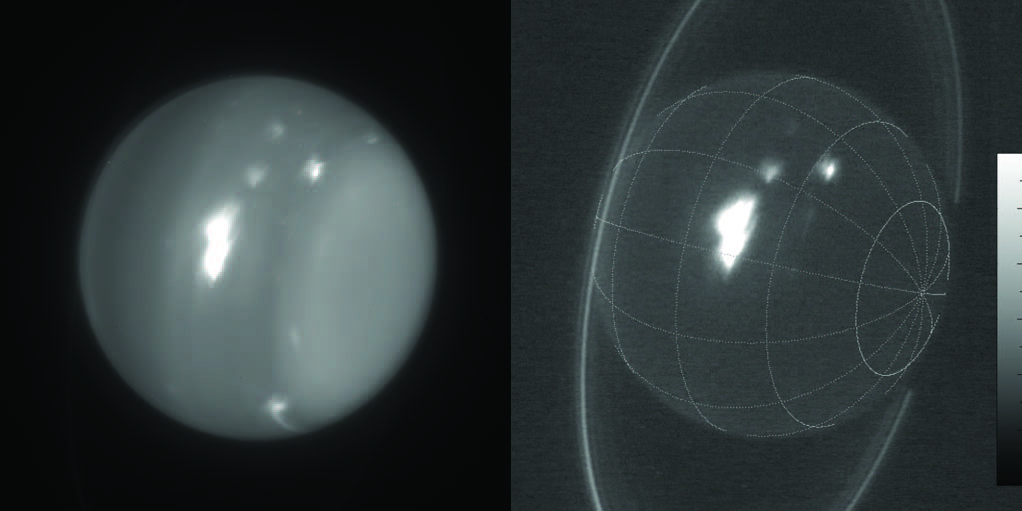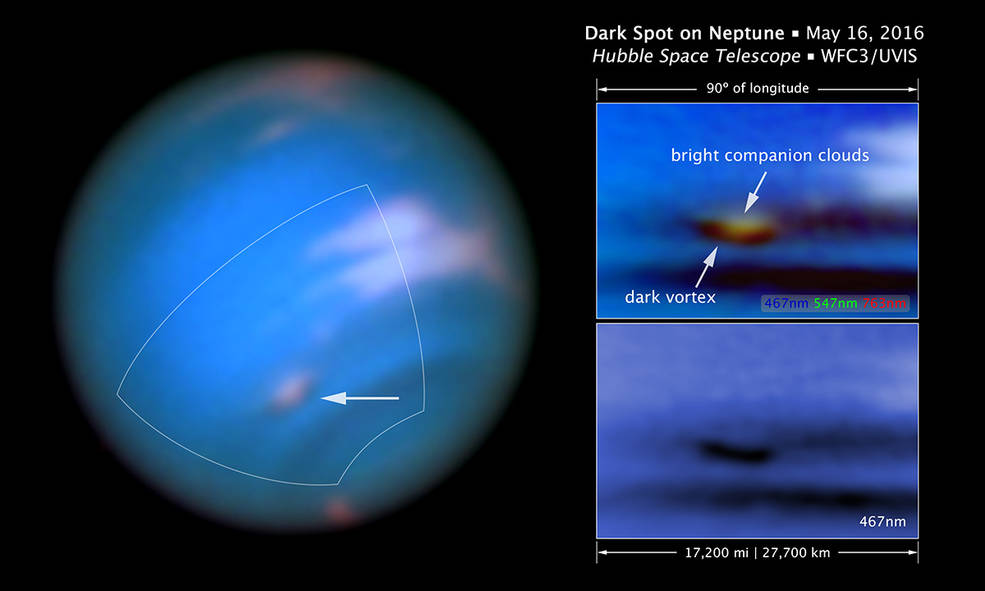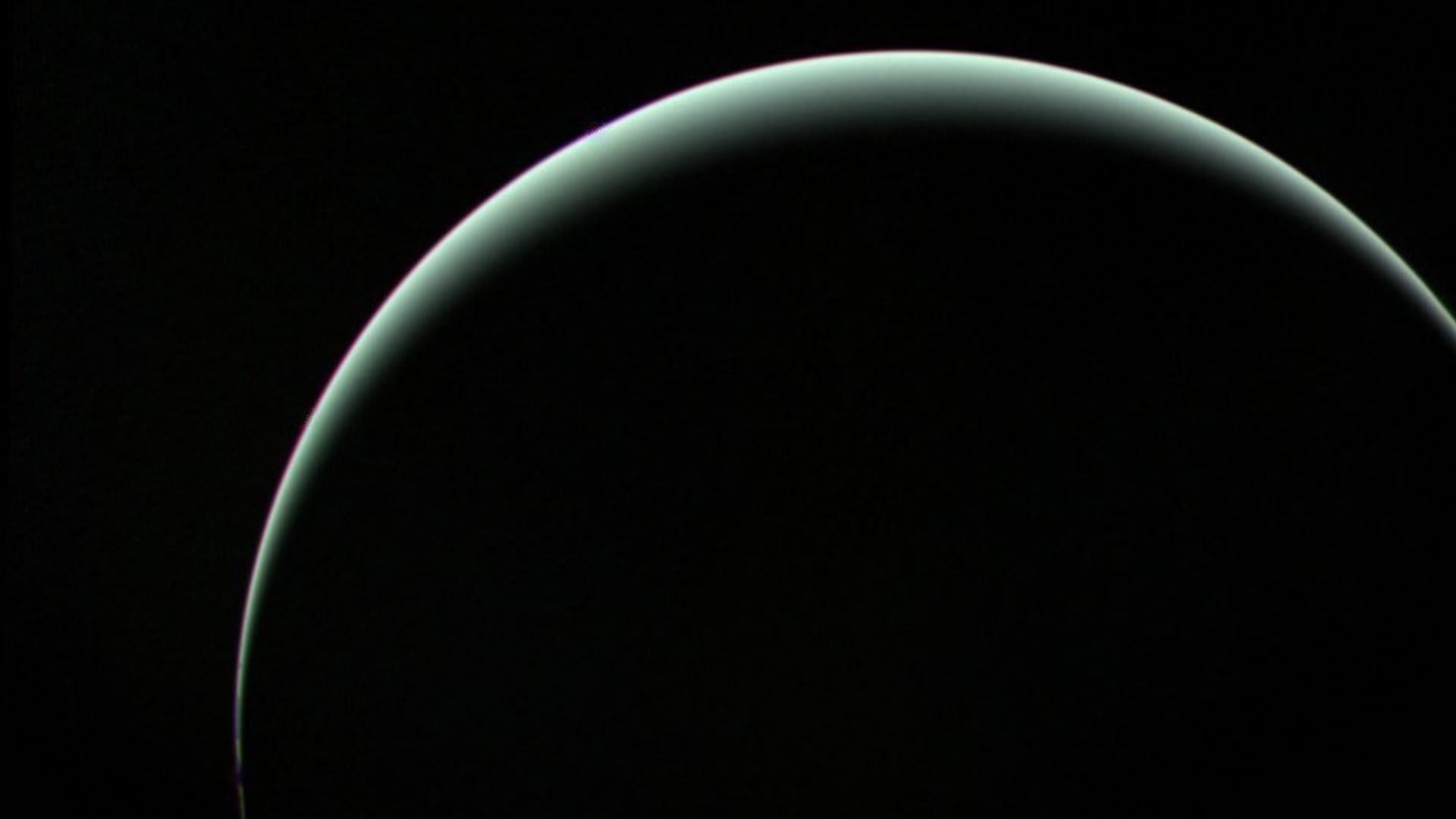Shades of Uranus: Scientists know why the planet and Neptune are different hues of blue
Less activity in a deep atmospheric layer might be what sets Uranus apart.
Why are Uranus and Neptune two different hues of blue?
The two worlds are quite similar in mass to each other — Uranus is roughly 15 times the mass of Earth, while Neptune is at 17 — with nearly identical atmospheric compositions of hydrogen (more than 80% each), helium and methane. But now, new research suggests that a "stagnant, sluggish" atmosphere on Uranus allows haze to build up and concentrate on the gas giant, making it a "whiter" cyan blue than Neptune's cerulean.
A new model, using wavelengths from ultraviolet to near-infrared, investigates multiple atmospheric layers in each of the planets. The study shows that embedded in the inner atmospheric planetary layers, there is even more haze than thought, rather than just icy clouds of methane and hydrogen sulfide. It is the first time a study took into account wavelengths from ultraviolet to near-infrared, rather than concentrating on a handful of light waves, authors said.
"It's also the first [study] to explain the difference in visible color between Uranus and Neptune," lead author Patrick Irwin, a planetary physics professor at Oxford University, said in a statement from the National Science Foundation's National Optical-Infrared Astronomy Research Laboratory, or NOIRLab.
Related: Voyager at 40: 40 photos from NASA's epic 'grand tour' mission

Previously, scientists had suggested it was the methane of Neptune that makes that planet so blue, as the gas absorbs a lot of red light and reflects bluer colors. But scientists were at a loss to explain what was going on at Uranus, given it has even more methane (2.3% of the atmospheric mass, compared with 1.9% at Neptune.)
That discrepancy suggests something else must be responsible for the color difference. But other key differences between the planets revealed few clues to the mystery. And both planets are understudied, each only having been visited by one spacecraft, NASA's Voyager 2 in the 1980s. Since then, scientists have relied on telescopic check-ins to monitor the two blue orbs.
Get the Space.com Newsletter
Breaking space news, the latest updates on rocket launches, skywatching events and more!
Uranus is an odd world, rotating on its side compared to the plane of the solar system in a way that leads to extreme seasons persisting for about 20 years. (A 2018 study suggested a world twice the size of Earth smacked into Uranus, causing its odd orientation.) Uranus also has little or no internal heat to supplement sunlight, presenting the coldest atmosphere of any solar system planet.
One of Neptune's distinctive atmospheric features is its storms; Neptune's winds can reach up to 1,500 mph (2,400 kph), the fastest yet detected in the solar system. When Voyager 2 flew by Neptune, it found a large storm nicknamed the "Great Dark Spot," which was large enough to contain the entire Earth. While that spot disappeared, others have popped up in observations from the Hubble Space Telescope.
Uranus has its own stormy temperament. The year 2014, for example, had an impressive show when storms were quite active on the usually quiescent world. Astronomers were astonished given that sunlight was strongest on the planet in 2007, when the sun's light fell directly upon the equator. The reasons for that time gap are poorly understood.

For the new study, astronomers used multiple observatories: fresh work from the Gemini North telescope near the summit of Mauna Kea in Hawai'i, along with archival data from the Hawai'i-based NASA Infrared Telescope Facility and Hubble. The studies spanned ultraviolet, visible, and near-infrared wavelengths (from 0.3 to 2.5 micrometers).
One particularly important component of that data was spectra, the distinctive "fingerprints" that measure how much of what wavelengths of light a given object emits. Gemini North's spectra allowed the scientists to understand how reflective each atmosphere was across the entire planet among different wavelengths of near-infrared light.
The resulting model focuses on aerosols, or suspended particles in the atmosphere, suggesting three layers of aerosols at different heights in the two planets' atmospheres.

It's the middle layer of each planet that seems to be most responsible for the different hues, the researchers say. In this layer on both planets, methane ice condenses on aerosols, but then the two worlds diverge.
Neptune's more active atmosphere likely produces snow as it moves methane particles into the haze, which removes haze over time. Uranus, however, has a thicker layer of haze due to its slower-moving atmosphere.
The scientists also suspect that the middle atmosphere layer is what produces dark spots on each planet.

Scientists will likely need to continue relying on ground-based and Hubble data to study the two strange worlds, since no spacecraft are yet targeted to go that far again, although a new government document suggests that a Uranus mission should be NASA's highest-priority large planetary science mission and launch in the 2030s.
In the meantime, the scientists behind the new research hope to learn more about how Uranus' atmosphere changes before southern spring begins in 2049, as Voyager 2 examined that region in summertime.
A study based on the research was published May 23 in the Journal of Geophysical Research: Planets.
Follow Elizabeth Howell on Twitter @howellspace. Follow us on Twitter @Spacedotcom and on Facebook.
Join our Space Forums to keep talking space on the latest missions, night sky and more! And if you have a news tip, correction or comment, let us know at: community@space.com.

Elizabeth Howell (she/her), Ph.D., was a staff writer in the spaceflight channel between 2022 and 2024 specializing in Canadian space news. She was contributing writer for Space.com for 10 years from 2012 to 2024. Elizabeth's reporting includes multiple exclusives with the White House, leading world coverage about a lost-and-found space tomato on the International Space Station, witnessing five human spaceflight launches on two continents, flying parabolic, working inside a spacesuit, and participating in a simulated Mars mission. Her latest book, "Why Am I Taller?" (ECW Press, 2022) is co-written with astronaut Dave Williams.









